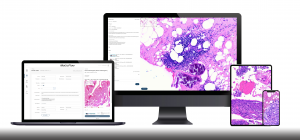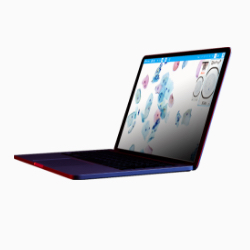What comes to mind when you hear the phrase “artificial intelligence in pathology”? Robots diagnosing cancer? Alexa telling you that your tumor is benign?
For some pathologists, the immediate fear is “Will AI replace pathologists?” Meanwhile, hospital directors might wonder, “How do I know the AI is accurate? What if the machine makes an error and opens us up to a lawsuit?”
Separating Facts from Science Fiction
These fears are not unreasonable when we consider how dystopian literature and cinema depict AI. Media primes us to think of robots more as the menacing Terminators of the world than the helpful WALL-Es. Moreover, AI concepts like “machine learning,” “deep learning,” and “neural networks” can feel like words from a foreign language to people who aren’t programmers or AI specialists — i.e. most pathologists, hospital directors, and lab staff!
What Artificial Intelligence in Pathology Will Do… and What It Won’t
The good news for anyone worried about a “the machines are coming!” scenario is that AI will prove a partner, not a threat to pathologists.
First of all, diagnosticians do not need to worry that artificial intelligence in pathology will replace them. For one, that aim is simply not the goal of pathology AI companies. Secondly, much of the work of diagnosis depends on the complex connections that only the human mind can make. While computers might be very, very good at certain tasks, they’re nowhere near as good as humans are at others. The point of AI isn’t to remove the human pathologists from the equation, but rather to assist human-led diagnostic care and, ultimately, to free up the pathologist’s time for the kinds of cases that require human intelligence and experience.
For example, something AI does extremely well is pattern recognition. One of our partner cytologists tells us that he’s excited for the potential uses of AI when it comes to image analysis that currently relies on subjective determinations by pathologists. In the case of immunotherapies, he explains, certain biomarkers have to reach a certain percentage before treatment can be approved. But pathologists measuring with their naked eye might miss something. Or perhaps two expert pathologists might assess the same slide slightly differently. The difference between 43% and 44% might normally feel minuscule, but if a single percentage point keeps a patient from receiving necessary care, it’s actually of vast importance. If AI is able to analyze the data in a more objective way, it could significantly reduce inter-and intra-observer non-concurrence and help improve the medical team’s confidence when recommending a treatment plan.
On a more mundane note, AI shows enormous promise to ease an overburdened global pathology workforce by automating low-risk but highly time-consuming routine tasks. Using AI to count mitotic features in a sample or to prioritize and assign cases would allow the pathologist to spend more time on rare or tricky cases, increasing the efficiency of a given lab in providing care.
Beyond (or Before) the Cancer Moonshot
What’s incredibly exciting about the development of artificial intelligence in pathology is that even before the industry reaches the lofty and necessary “cancer moonshot” goal, AI already has the potential to transform global health outcomes in the interim.
For example, Motic already leverages AI in our malaria project with Global Good, an Intellectual Ventures initiative funded by the Bill and Melinda Gates Foundation. With the EasyScanGO, Motic engineers utilize machine learning to count malaria parasites in a blood smear. This is the kind of simple, repetitive, and objective task that is incredibly time-consuming for a human microscopist — one expert compared it to finding marbles in a standard football field! — but which a machine can repeat ad infinitum. For regions of the world that lack the numbers of providers that high-income or well-resourced countries have, this kind of support for practitioners is even more vital.
The Path Forward
In all of these scenarios of artificial intelligence in pathology, there’s no point at which we remove the human pathologist completely. The winning combination with developing and using machine-learning algorithms will always be human plus AI. This combination has been proven to provide the highest level of accuracy in research studies; it also reassures anyone who might be worried about the dystopian scenarios mentioned above, since it builds in human oversight at each step.
It’s clear that the way forward is for human intelligence to direct and guide artificial intelligence. Google’s SMILY project, for example, uses what they call “human-centric automation,” a hybrid workflow that allows the human pathologist to manually refine selections offered by the AI. The researchers found that changing their interface to encourage more pathologist interaction not only made the system as a whole more accurate, it also boosted users’ trust in the AI and their self-reported likelihood of adoption.
Introducing AI early on in the pathologist training process will also encourage adoption. A concern our team heard repeatedly at the recent Pathology Visions conference is that pathology as a specialty isn’t attracting enough medical students. Implementation of AI in teaching programs demonstrates that our field is both future-oriented and proactively working on solutions to prevent pathologist burnout.
Conclusion
Though we often describe digital pathology as a revolution, the AI component will come incrementally and after a great deal of testing. Moreover, adoption will (and must) look different for different organizations as pathologists and hospitals set their own goals and measurements of success. With a targeted and measured roll-out, artificial intelligence in pathology shows exciting promise to vastly improve day-to-day diagnostic workflows while maintaining the trust of humans in healthcare.






